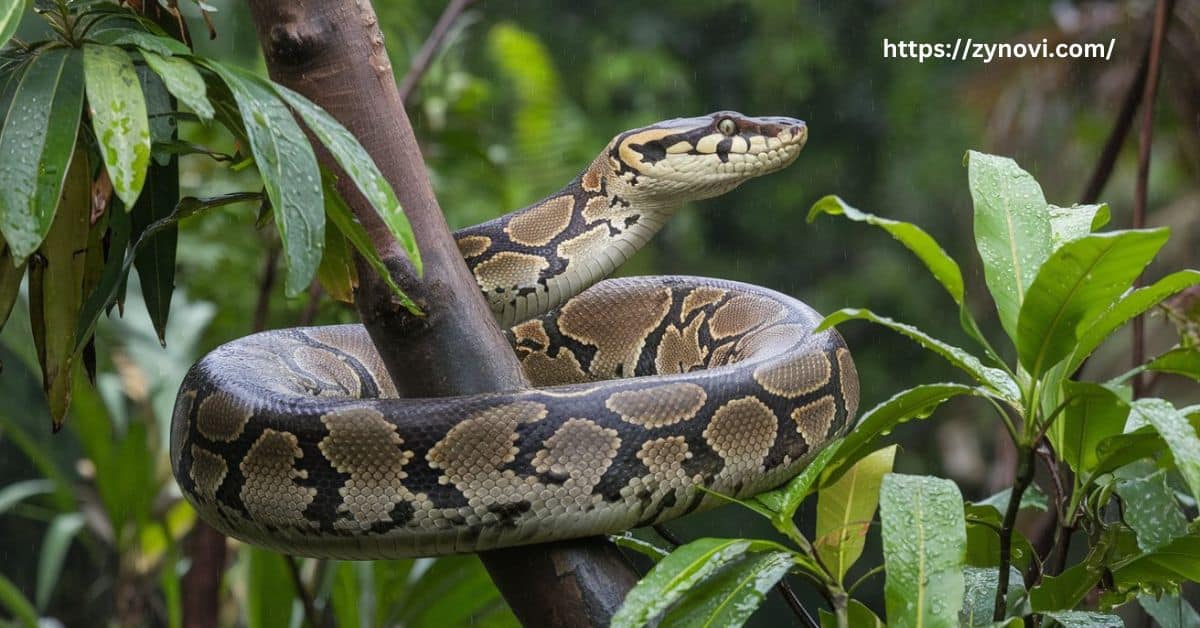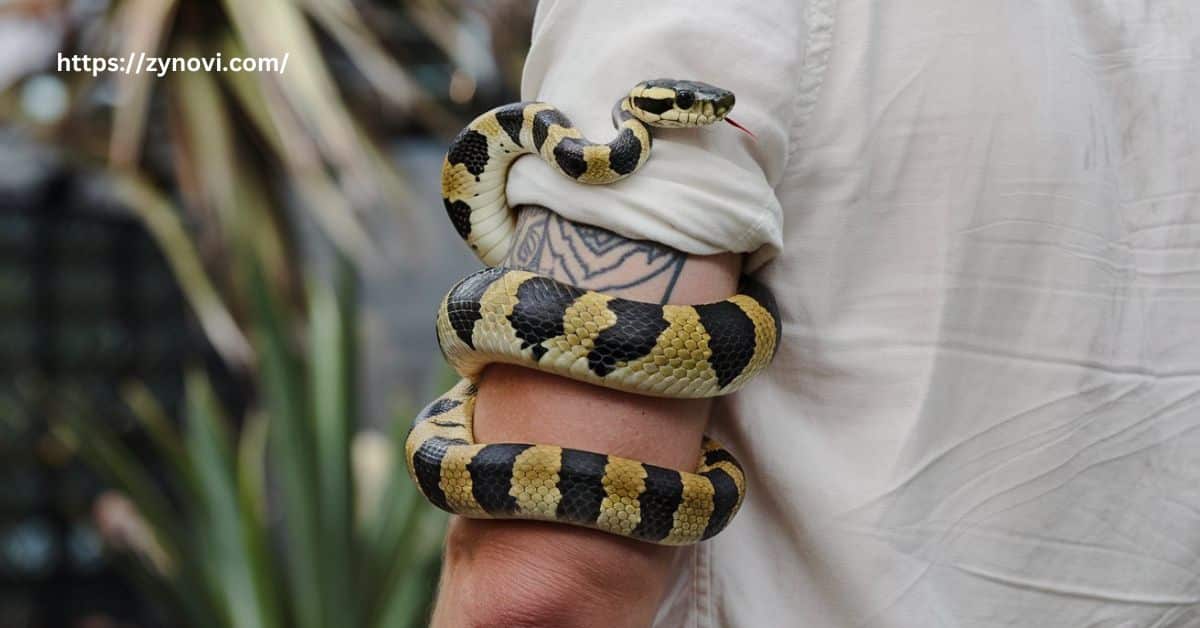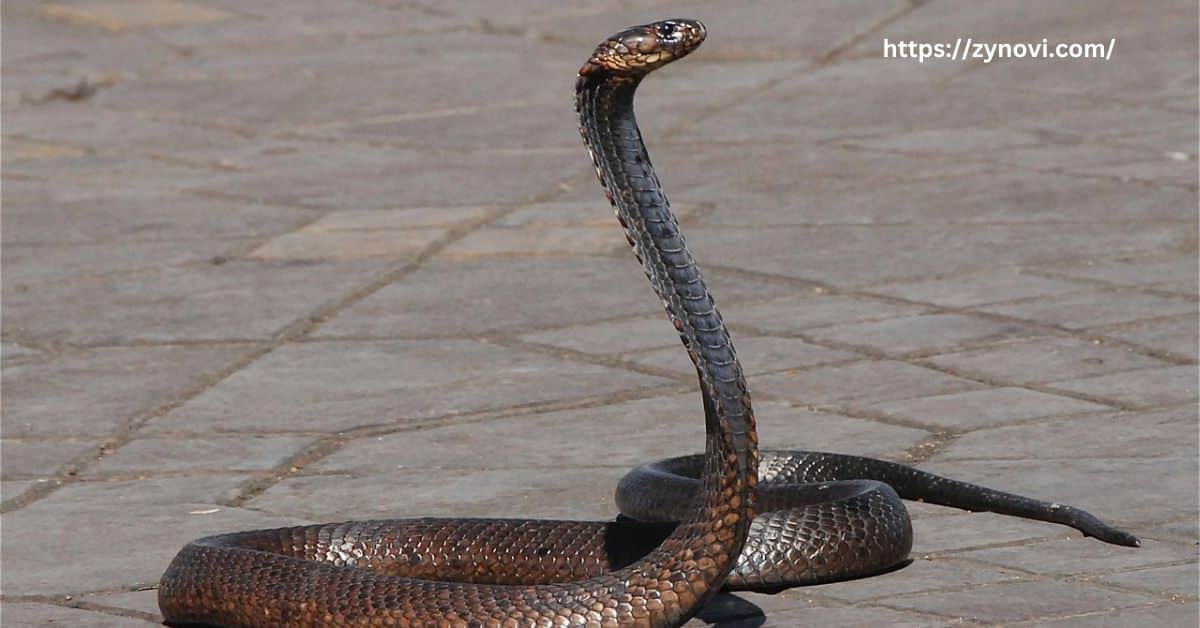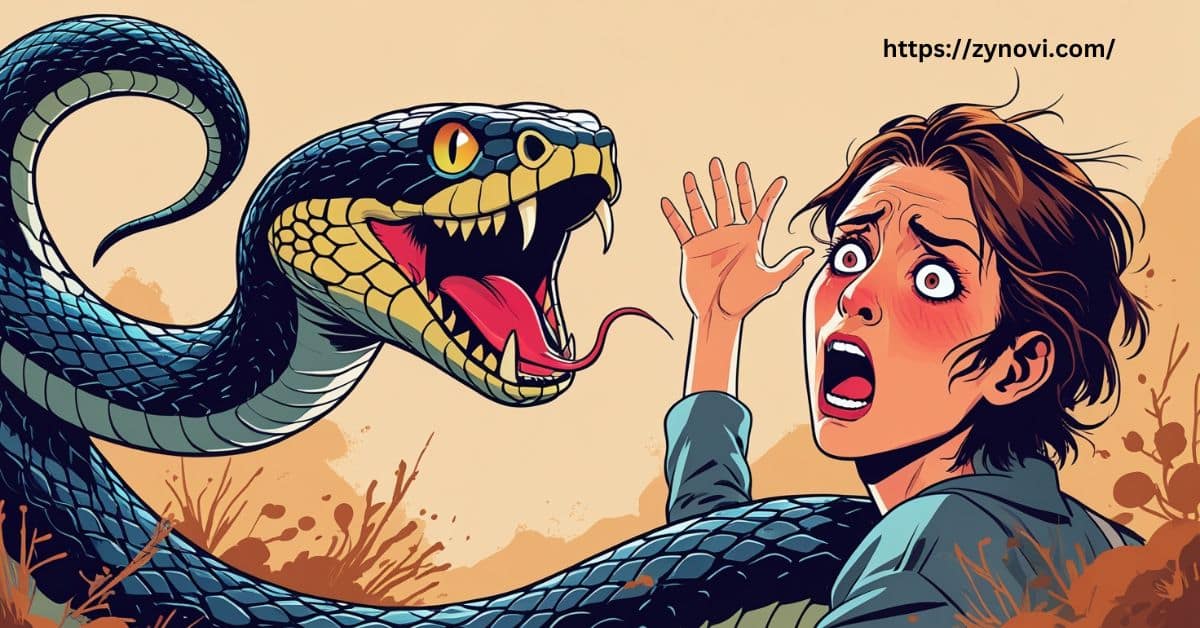Do Snakes Attack Humans? Snakes typically don’t seek to attack humans; they will only strike if they feel cornered or threatened.
This is a question many people ask when they encounter these slithering creatures in the wild or even in their backyards. The fear of snake attacks is real, but understanding their behavior can put your mind at ease. Snakes are fascinating animals with unique habits, and most of the time, they would rather avoid humans than attack.
In this article, we’ll break down the truth behind snake behavior, debunk common myths, and give you practical tips on how to stay safe. Keep reading to discover how to coexist peacefully with snakes and minimize the risk of any unwanted encounters.
What Are Snakes?
Snakes are cold-blooded animals belonging to the reptile family, characterized by their elongated bodies and lack of limbs.
They are found in a wide range of snake habitats, including dense forests, arid deserts, humid wetlands, and even urban areas where they may seek shelter in gardens or abandoned structures.
| Category | Details |
|---|---|
| Total Snake Species | Over 3,900 worldwide |
| Venomous Snakes | About 600 species capable of delivering toxic bites |
| Non-Venomous Snakes | Majority rely on constriction or other methods to subdue prey |
| Threat to Humans | Non-venomous species pose little to no threat unless provoked |
| Snake Behavior | Often avoid encounters; understanding their role helps dispel fears and misconceptions |
Types of Snakes
| Snake Species | Venomous or Non-Venomous | Geographical Locations |
|---|---|---|
| Cobras | Venomous | Africa, Asia |
| Vipers | Venomous | Africa, Asia, Latin America |
| Rattlesnakes | Venomous | United States, Latin America |
| Black mamba | Highly Venomous | Sub-Saharan Africa |
| Russell’s viper | Highly Venomous | South Asia |
| Garter snakes | Non-Venomous | United States, Canada |
| Pythons | Non-Venomous (Constrictor) | Africa, Asia, Australia |
| Corn snakes | Non-Venomous | United States |
Snakes play a vital role in ecosystems by controlling rodent populations and maintaining biodiversity. However, human-snake interactions can sometimes lead to snake bites and rare snake attacks.
Do Snakes Attack Humans?

When Are Most Likely Snake Attack?
Snake attacks are extremely rare and usually occur when a snake feels threatened. Most incidents happen in rural areas, particularly in regions where people live close to snake habitats. Common scenarios include:
- Accidentally stepping on or near a snake while hiking, farming, or walking through tall grass can startle the snake, causing it to strike in self-defense.
- Attempting to handle or kill a snake often provokes a defensive reaction, as snakes perceive such actions as direct threats to their survival.
- Disturbing a snake in its hiding place, such as under logs, rocks, or bushes, can lead to a sudden attack if the snake feels cornered and unable to escape.
How Common Are Snake Attacks?
According to the World Health Organization (WHO):
- Around 5.4 million snake bites occur each year globally, affecting people in both urban and rural areas, though rural populations are at higher risk.
- 2.7 million bites result in envenomation (venom injection), requiring medical treatment to counteract the effects of venom.
- 81,000 to 138,000 people die annually from snakebite complications, including organ failure, internal bleeding, or paralysis caused by venom.
- Latin America, Sub-Saharan Africa, and South Asia report the highest cases, largely due to agricultural activities, snake-infested habitats, and limited access to medical care.
Why Do Snakes Attack?
Snakes do not attack humans deliberately. Their primary reasons for biting include:
- Defensive behavior – When a snake perceives a threat, it may strike to protect itself, often as a last resort when escape is not an option.
- Mistaken identity – Snakes rely on movement and heat detection, so they may bite when they mistake a moving hand or foot for prey, especially in low visibility conditions.
- Constriction (only by pythons) – Large constrictors like pythons do not use venom but may coil around perceived threats, attempting to subdue them through suffocation before realizing their mistake.
Types of Snake Attacks
Snake attacks can be classified into:
- Venomous bites: Caused by species like cobras, vipers, and rattlesnakes, leading to envenomation. These bites can inject neurotoxic, cytotoxic, or hemotoxic venom, which may cause severe medical complications if untreated.
- Dry bites: A snake bites but does not inject venom. These occur when venomous snakes choose to conserve their venom, often as a warning rather than a lethal attack.
- Constriction attacks: Used by pythons and anacondas to suffocate prey. These snakes wrap around their target, applying pressure each time the victim exhales until they can no longer breathe.
- Multiple strikes : Some snakes bite repeatedly when extremely agitated. Species like the black mamba and Russell’s viper are known for delivering multiple rapid bites in a single encounter, increasing the severity of envenomation.
How to Prevent Snake Attacks

To reduce the risk of snake bites, follow these safety measures:
- Wear protective clothing – When venturing outdoors, especially in snake-prone areas, wear sturdy boots that cover your ankles, thick socks, and long pants. This protective gear creates a barrier between you and the snake, reducing the likelihood of a bite.
- Stay on designated paths – Always stick to well-trodden paths and avoid wandering through tall grass, piles of rocks, or logs. These areas often serve as hiding spots for snakes, increasing the chance of an unexpected encounter.
- Recognize warning signs – If you hear a hissing sound, see a rattling tail, or observe a snake flaring its hood, these are clear warning signs of potential danger. If you encounter these behaviors, back away slowly without startling the snake to prevent a bite.
- Avoid handling snakes – While some snakes may appear non-threatening, it’s important to remember that even non-venomous species can strike in self-defense. Never attempt to pick up or handle a snake unless you are trained to do so.
- Keep surroundings clean – In residential areas or farms, maintain a clean environment by clearing away debris, tall grass, and piles of rocks. This reduces potential hiding spots for snakes and helps prevent them from taking up residence near your home or work areas.
How Dangerous Are Snake Bites?
Effects of Venomous Snake Bites
Certainly! Here’s an expanded version of the table:
| Venom Type | Effects on Humans | Examples |
|---|---|---|
| Neurotoxic venom | Affects the nervous system, causing paralysis, difficulty breathing, and potential respiratory failure if untreated. It often targets the muscles and nerves, leading to weakness and loss of motor control. | Cobras, Black mamba, Coral snakes |
| Cytotoxic venom | Destroys tissues at the site of the bite, causing severe pain, swelling, and potential necrosis. This venom can lead to gangrene, requiring surgical intervention. | Puff adders, Russell’s viper, Gaboon viper |
| Hemotoxic venom | Impairs blood clotting, causing internal bleeding, organ damage, and potential kidney failure. The venom may also affect blood vessels and tissues, leading to bruising and swelling. | Rattlesnakes, Vipers, Cottonmouth snakes |
First Aid for Snake Bites
Here’s an expanded version of the first aid points:
- Do NOT try to suck out venom – Attempting to suck out venom can worsen the situation by increasing the risk of infection or spreading the venom through your mouth. Focus on getting help instead.
- Keep the victim calm to slow venom spread – Anxiety and panic can increase heart rate, which in turn speeds up venom circulation. Encourage the victim to stay calm and still to reduce the spread of venom.
- Immobilize the affected limb – Keep the bite area still to prevent the venom from traveling through the body more quickly. Use a splint or wrap the limb loosely to minimize movement.
- Seek medical attention immediately – Time is crucial in treating snake bites. Call emergency services or get the victim to the hospital as soon as possible for proper treatment and antivenom if needed.
- Avoid applying tourniquets – Tourniquets can restrict blood flow and worsen tissue damage. It’s best to avoid using them and instead focus on keeping the limb immobilized and at or below heart level.
Common Myths About Snake Attacks

Here’s an expanded version of the common myths:
- “Snakes chase humans” This is false. Snakes generally avoid human contact and will not chase after you. They are more likely to flee when threatened, as they do not actively seek confrontation.
- “You can tell a venomous snake by its color” This is an inaccurate assumption. While some venomous snakes may have bright colors, many harmless species mimic these traits to ward off predators. Color alone is not a reliable indicator of venomous snakes.
- “Sucking venom out helps” This dangerous myth has no medical basis. Sucking venom out can cause infection and spread the venom further, making the situation worse. Immediate medical attention is the only effective response.
Final Verdict
While snake bites can occur, they are rarely fatal when prompt medical care is provided. The key to minimizing the risk of bites is staying informed and prepared. By adhering to snake safety guidelines, wearing appropriate protective clothing, and being mindful of your surroundings, you can significantly reduce the likelihood of encounters.
Recognizing the warning signs of snakes and knowing what steps to take in case of a bite can be life-saving. Being proactive in these measures ensures that, even in snake-prone areas, the risk of serious harm remains low.
FAQs
What to do if a snake chases you?
If a snake appears to chase you, stay calm and slowly back away, giving it space to retreat. Running can trigger a defensive strike.
Do snakes fear humans?
Yes, snakes usually fear humans and will avoid confrontation if given the chance to escape.
Should you stand still if you see a snake?
Yes, staying still can prevent startling the snake, allowing it to move away on its own.
What snake attacks humans the most?
The most common snake species that bite humans are pit vipers, like rattlesnakes and copperheads, due to their proximity to human habitats.
Conclusion: Do Snakes Attack Humans?
Understanding snake behavior is crucial for preventing unnecessary fear and potential danger. Snakes are typically not aggressive and rarely pose a threat unless provoked. Most snake bites occur due to human mistakes, such as approaching them too closely or disturbing their habitats.
By learning how snakes behave and respecting their space, we can minimize conflicts and reduce the chances of bites. When we approach these cold-blooded creatures with caution and understanding, it’s possible to coexist safely with them in their natural environments, benefiting both humans and wildlife.










